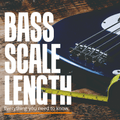A Beginner’s Guide To Guitar Picks (Part II)
By Strings Direct – 29 August, 2023

In the first part of this Beginner’s Guide to Guitar Picks, we looked at some of the initial considerations you need to make when looking at picks. So often, players dismiss this element of their setup. They choose instead to focus on the larger and more expensive elements of their rig, like their amp, guitar and pedals.
Yet this approach is flawed. Although guitar picks are small and almost certainly the cheapest element of your setup, they make a notable difference. Not only do they have an impact on your tone, but they have a significant impact on playability. Your guitar pick is what connects you to your instrument and actually facilitates your playing. And as such, your guitar pick is worthy of your attention.
In the first part of this guide, we looked at how different materials and gauges affect tone and playability. So if you haven’t read that article, I would head over there first before continuing here.
In this second part however, we are going to go deeper into the world of guitar picks. Specifically, we will look at how the size, shape and overall design of your pick impacts tone and playability. We’ll also conclude the guide and look at how you can actually choose the right pick(s) for your setup. So with that in mind, let’s get into it!
Shape
Over the years, manufacturers have produced guitar picks in a whole range of different shapes. These different shapes have an impact on how the pick feels in your hand, and how it interacts with your strings. And this makes picks of different shapes more or less suitable, depending on your playing style.
There are too many different shape variations to list here, but some of the most common shapes that you will encounter when buying guitar picks are as follows:
Standard '351' guitar picks
This is the ‘classic’ guitar pick. It is one of the most common and widely available pick shapes. It works well in most playing situations and is considered a versatile and fairly safe option.
So if you are starting out - or if you are looking for a guitar pick that is versatile - then opting for a pick of this shape is a good idea. Some different options to consider are as follows:
- Jim Dunlop Standard Tortex Picks 1mm
- Fender 351 Classic Picks Light Gauge
- Jim Dunlop Standard Nylon Picks 0.88mm
These picks are typically called either classic, standard or 351 guitar picks. The latter refers to the code that manufacturers like Fender use to identify guitar picks of different shapes and sizes.
Jazz III guitar picks
Alongside the classic shape, the Jazz III is one of the most common pick shapes you are likely to encounter. This is typically a smaller pick shape that often has quite a sharp tip. Some different options to consider are as follows:
As you might have guessed from the name, these guitar picks were first used by jazz guitarists. This is because the smaller shape and sharper point of the pick gave them greater control when playing fast licks and solos.
In recent years though, Jazz III guitar picks have become popular amongst lead guitarists across a whole range of different genres.
If you are predominantly playing lead guitar, or if you want to play quickly, then a Jazz III pick makes a great choice. The small shape is economical and allows you to play with precision and clarity, even when you are playing quickly.
Triangle guitar picks
On the other side of the size spectrum are triangle guitar picks. These are much larger picks, which work well for players who struggle to hold onto smaller picks, or for players who have much larger hands. Some different options to consider are as follows:
As a result of their size, these picks tend to be too cumbersome for lead guitarists, who need to move quickly across their strings. Instead they are better suited for rhythm guitarists and are also popular with bass players, who need large picks to strike their heavy gauge strings.
Common variations
There are a great number of variations on each of the picks shapes listed above. In most cases though, these are just slight variations on the three common pick shapes I have added in above.
For example, there are 'teardrop guitar picks', which are very similar in size and shape to Jazz III picks. The main difference is that the edges of the teardrop picks are rounded, whereas those in the Jazz III are angular.
You can then get variations on these teardrop picks. Some are thinner and narrower, whilst others are fatter and wider. And similar variations exist for the other shapes listed above too. You can get triangle guitar picks that are pointy and angular, and others that are softer and have more rounded tips.
In short, as is always the case with guitar gear - you have many different options to consider. Don’t worry though, as below I look at how you can assess all of these choices to decide which pick(s) are best suited for you.
Additional shapes
Beyond these more common shapes, there are a huge range of different shaped guitar picks out there. These include shark fin picks, 'dragon heart' picks, and even picks that are designed to look like the tail of a snake.
All of these picks present interesting tonal options that you can't achieve with a normal guitar pick. With a shark fin pick for example, you can use either the tip of the pick or the serrated edge to strike your strings. And both sides give you a slightly different sound.
Despite that, I wouldn’t recommend these options for most guitarists. Often these unusual picks are quite large and cumbersome. As such, they can be more difficult to control, which will make playing at speed and manoeuvring across your strings more challenging.
Size
To give you even more to think about, many of the guitar picks above also come in different sizes. You can get Jazz III guitar picks that are actually quite large. And you can get triangle picks in a range of different sizes too.
The main exception to this is the 351 guitar pick shape. Typically, these guitar picks come in a single size. There are slight variations in the shape of the pick (more on this below), but these picks all tend to be similar in size.
The size of the pick that you choose doesn't really have an impact on your tone, but it does have a significant impact on playability.
Broadly speaking, smaller guitar picks make playing easier. There is less space between your hand and the string, which allows you to keep your hand closer to the strings of your guitar. This puts your hand into a more comfortable playing position and makes techniques like palm muting easier. Small guitar picks are also easier to control. They are more compact and easier to move around and manoeuvre.
Having said that, personal taste and preference plays an important role here too. If you have very large hands or if you struggle to hold onto a small guitar pick, then a slightly larger pick might make a better choice.
Pick tips & bevels
The last element to consider when looking at guitar picks, is the shape of the tip and the bevel of the pick.
I suspect that you are familiar with the first of these terms. The pick tip is simply the bottom of the pick which is the point that comes into contact with your strings.
The term ‘bevel’, however, might be one that is new to you. Essentially, when a pick has a beveled edge, the side of the pick has been slightly worn down and rounded off. This has more of an impact on the shape of the pick from front to back, but it also affects the tip of the pick as well.
Both of these elements have an impact on tone and playability, which we will look at now:
Sharp vs. rounded pick tips
In simple terms, pick with sharp tips produce quite an aggressive and biting sound. They are great for playing at speed and for fast alternate picking, but they are not so good for strumming chords. This is because the sharp point of the pick is not well suited for gliding smoothly across the strings.
Conversely, guitar picks with a very rounded tip produce a more mellow sound. They are not suitable for playing fast, as the rounded tip isn't able to grip the strings very well. However they are great for rhythm playing and strumming chords.
If you have a guitar pick with a tip that is either very pointed or very rounded, it can fundamentally alter the tonal characteristics and playability of your pick.
Let's say for example that you have a heavy gauge Ultex Jazz III pick. That guitar pick should have quite a strong attack and biting tone. As such, it should be suitable for fast lead guitar playing. But if you totally round off the end of the pick, it will mellow the sound out and make it more difficult to play quickly.
Conversely, if you take a thin gauge, large triangle pick made from celluloid and file the end down to a sharp point, it will make the pick sound sharper and more biting.
The effect of this is not particularly significant in the middle range. But if you go to the extremes - and choose a pick with either a totally rounded edge, or a fine point - it will alter your tone and playability.
Bevels
The final design element of your pick that is worth considering, is whether it has a beveled edge. As noted above, this just means that the pick has one side that has been slightly worn down and rounded off.
It is rare to find this on thin guitar picks, as there isn't enough material to round off. As such, you will typically only find a beveled edge on thicker guitar picks.
If you do use a thicker pick though, it is worth looking out for one that has a beveled edge. These don't impact tone, but they do have a positive effect on playability.
The rounded edge prevents your pick from getting stuck on your strings. This allows you to play chords more easily, and also to move between strings nice and smoothly. In short, it helps you to ‘glide’ across the strings more easily.
So if you plan on going for a heavier pick, then I would definitely recommend looking at one that has a beveled edge
How to choose the right guitar picks
At this point, I suspect that you might be feeling somewhat overwhelmed. After all, who would have thought that so much could go into a little piece of plastic?
Don't worry though, you don't need to know the minutiae of all of the different types of guitar pick out there to find a pick that will work for you.
The key to choosing the right guitar pick for your setup is to work out roughly what you are looking for, and then refine your search from there. And this is actually simpler than it sounds. If you simplify all of the information we have covered in this guide so far, then you will see that those characteristics that make a guitar pick suitable for rhythm playing, make the same pick unsuitable for lead guitar playing. And vice versa.
Let's look at this in a bit more detail.
Best Guitar Picks For Lead Playing
If you were to design the 'perfect' guitar pick for lead playing it would be:
- Small
- Heavy gauge
- Made from an inflexible material like ultem or acrylic
- Sharp tipped
- Beveled
All of the above characteristics help with lead playing. They help you to play fast, give you a greater dynamic range and give your playing clarity and precision. Tonally, these guitar picks are bright and produce a sound with a more defined bottom end.
Best Guitar Picks For Rhythm Playing
Conversely, if you were to design the 'perfect' guitar pick for rhythm playing it would be:
- Larger
- Light gauge
- Made from a more flexible material, like celluloid, nylon or felt
- Round tipped
All of the above characteristics help with rhythm playing. They help you to strum smoothly and comfortably, and they produce a well balanced and shimmering tone.
Striking the balance
The challenge here is that most guitarists don't fall neatly into one of the categories I've outlined above. This is because they play a mix of rhythm and lead and a variety of different styles. And so they need at least some versatility from their guitar picks. As such, if you are still somewhat confused about your choice, I would recommend going down one of the following routes:
1.) Choose a single type of guitar pick that works well for you. Decide the characteristics that are most important to you, and then try out a range of different guitar picks in that style. With a bit of trial and error, you'll eventually settle on a pick that is comfortable, and which allows you to play both lead and rhythm guitar effectively, without feeling like you are compromising on either front.
2.) Choose different guitar picks for different occasions. If you like to play acoustic rhythm guitar on some days and fast lead guitar on others, it might make more sense to use different guitar picks at different times. In this way you can use picks that are suited to the specific style you are playing at any given moment.
Of the two options outlined above, the first is my preference. And it is simply because in a real practical playing situation, you are likely to be switching between rhythm and lead playing fairly fluidly. As such, I think it makes sense to feel comfortable with a single pick that you can use for both purposes, rather than having different picks for different occasions. To my mind the second option is more applicable if you like to play very different musical styles, and you can’t find a single pick to cover all of your bases.
Beyond that, there are a few additional points I would recommend thinking about when you are searching for the right guitar picks. And these are as follows:
Experiment
Compared to guitars, amps and pedals, guitar picks are very cheap. And although there are some expensive guitar picks out there, your pick is still likely to be by far the cheapest part of your guitar rig. As such you can buy and try out a lot of different types of pick, without incurring too much expense.
Avoid extremes
When you are starting out, avoid opting for guitar picks at the extreme ends of the spectrum. I have encountered very few guitarists who use a pick less than 0.50mm thick. Likewise, I have met very few players who use a pick much thicker than 2.0mm.
Whilst everyone has a personal preference, it is useful to look to other guitarists for guidance. I would always advocate starting with relatively ‘safe’ options and then being more adventurous after that.
Keep on tweaking
Even if you are happy with the guitar pick you use, I would still recommend trying out and tweaking the picks you use. You would be surprised at the differences that even small alterations can make.
I speak from personal experience here. After experimenting with a lot of different guitar picks for a number of years, I settled on Dunlop Tortex Standard 1.14mm guitar picks. These picks felt comfortable and I really enjoyed playing with them. Then one day - just out of curiosity - I decided to try a set of Dunlop Jazz III guitar picks.
I was amazed at the difference this change made. The Jazz III picks felt more comfortable in my hand and my playing improved almost instantly. I could play quicker and my playing was more precise and controlled. I have used Jazz III picks ever since.
So even if you are happy with the guitar picks you are using at the minute, try mixing things up every now and again. You might just find something that works even better for you.
The one caveat here is to try to not get carried away. It is easy to think that the perfect piece of gear is out there waiting for you. And whilst I do advocate trying out different guitar picks, you don't need to make this a frequent or even continual process.
If you find a brand and type of picks you like, stick with them. Then every now and again, try out a similar but slightly different set of picks.
Closing thoughts
Well there we have it, everything you need to know to get started finding the right guitar picks.
The information outlined here is intended as a guide. When you are buying guitar gear - be it something as small and inexpensive as a pick, or something as large and expensive as a guitar - it is good to know what you are buying and why. This will empower you to make the right buying decisions.
Yet whilst all of this information is important, don't buy new gear based solely on facts. Buying guitar gear is all about finding the sweet spot between tone and playability. And most importantly, it is about figuring out what works best for you. On paper, a small, thick and inflexible pick might seem like the obvious choice for your playing style. But if after repeatedly playing them, you find those picks to be difficult and challenging, try something else.
Your guitar pick is what connects you to your instrument. So if in doubt, err on the side of comfort and playability. Don't get so wrapped up in the tonal properties of the different materials or in what you think you should be playing. If you are playing at your best, then you will be producing a great tone, and enjoying yourself. And that's what this is all about.
* * * * *
ABOUT THE AUTHOR

The Happy Bluesman
www.happybluesman.com
@happybluesman
















